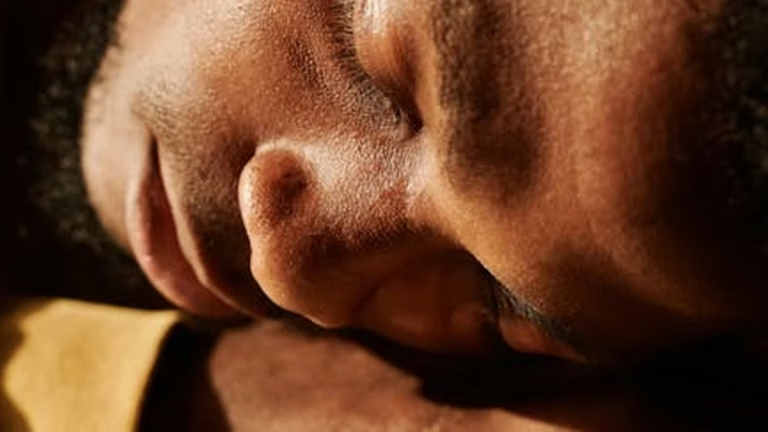Decoding Sleep Trackers: Using Data to Optimize Your Autumn Sleep Cycle
The crisp air, pumpkin spice lattes, and cozy sweaters signal the arrival of autumn. But for many, the changing season also brings disruptions to their sleep cycle. Shorter days, altered routines, and seasonal affective disorder (SAD) can all wreak havoc on your ability to get a good night’s rest. Fortunately, sleep trackers can offer valuable insights into your sleep patterns, empowering you to make informed adjustments and reclaim restful nights.
Understanding Sleep Trackers and Their Data
Sleep trackers have become increasingly popular, offering a convenient way to monitor various aspects of your sleep. These devices, often worn as wristbands or integrated into smartphones, use sensors to collect data on:
- Sleep Duration: The total amount of time you spend asleep.
- Sleep Stages: Time spent in light sleep, deep sleep, REM sleep, and wakefulness.
- Sleep Latency: The time it takes you to fall asleep.
- Sleep Efficiency: The percentage of time you spend asleep while in bed.
- Heart Rate Variability (HRV): A measure of the variation in time between heartbeats, which can indicate stress levels and recovery.
- Movement: Tracking your movements throughout the night.
It’s important to remember that sleep trackers aren’t perfect. They can be influenced by factors like body position and movement, and their accuracy can vary. However, they provide a valuable baseline and trend analysis, allowing you to identify patterns and potential problem areas in your sleep.
Choosing the Right Sleep Tracker
With so many options available, selecting the right sleep tracker can be overwhelming. Consider these factors:
- Form Factor: Wristbands, rings, smartphone apps, or bedside devices. Choose what you’ll consistently wear or use.
- Features: Do you need advanced features like HRV tracking or sleep apnea detection?
- Accuracy: Read reviews and compare different trackers’ accuracy ratings.
- Battery Life: How often will you need to charge it?
- Price: Set a budget and find a tracker that fits your needs.
Analyzing Your Sleep Data for Autumn Optimization
Once you’ve chosen a sleep tracker, the real work begins: analyzing the data to understand your sleep patterns and identify areas for improvement. Here’s how to use the data to optimize your sleep cycle during the autumn months:
Identifying Sleep Disruptions
Look for patterns in your data that indicate sleep disruptions. Are you consistently waking up at the same time each night? Is your sleep latency increasing? Are you spending less time in deep sleep? These could be signs of underlying issues, such as stress, caffeine intake, or an irregular sleep schedule.
Example: If you notice a significant decrease in deep sleep, it could be related to increased stress levels. Try incorporating relaxation techniques like meditation or yoga into your evening routine.
Adjusting Your Sleep Schedule
The changing daylight hours of autumn can disrupt your circadian rhythm, the body’s natural sleep-wake cycle. Use your sleep tracker data to identify the best bedtime and wake-up time for your body. Aim for consistency, even on weekends.
Tip: Gradually adjust your bedtime and wake-up time by 15-30 minutes each day until you reach your desired schedule. This will help your body adapt more easily.
Optimizing Your Sleep Environment
Your sleep environment plays a crucial role in sleep quality. Ensure your bedroom is dark, quiet, and cool. Use blackout curtains, earplugs, or a white noise machine to minimize distractions. Set your thermostat to a comfortable temperature, ideally between 60-67 degrees Fahrenheit.
Tip: Consider using a sleep mask to block out any remaining light. Even small amounts of light can disrupt sleep.
Managing Seasonal Affective Disorder (SAD)
Shorter days can lead to SAD, a type of depression that occurs during the fall and winter months. Light therapy can be an effective treatment. Consider using a light therapy lamp in the morning to help regulate your circadian rhythm and boost your mood. Your sleep tracker may help you identify patterns consistent with SAD, such as increased sleep duration but decreased sleep quality.
Diet and Lifestyle Adjustments
What you eat and drink can significantly impact your sleep. Avoid caffeine and alcohol close to bedtime. Eat a balanced diet and get regular exercise, but avoid intense workouts in the evening. Consider incorporating sleep-promoting foods like almonds, cherries, and chamomile tea into your diet.
Example: Track how different foods affect your sleep quality using your sleep tracker. You might find that eating a heavy meal before bed disrupts your sleep.
Beyond the Data: Holistic Sleep Hygiene
While sleep trackers provide valuable data, they’re just one piece of the puzzle. Holistic sleep hygiene practices are equally important. These include:
- Establishing a relaxing bedtime routine: Take a warm bath, read a book, or listen to calming music.
- Avoiding screens before bed: The blue light emitted from electronic devices can interfere with melatonin production.
- Creating a comfortable sleep environment: Make sure your mattress and pillows are supportive and comfortable.
- Managing stress: Practice relaxation techniques like meditation or deep breathing exercises.
By combining the insights from your sleep tracker with good sleep hygiene practices, you can optimize your sleep cycle and enjoy restful nights throughout the autumn season. Remember to consult with a healthcare professional if you have persistent sleep problems.
Ultimately, decoding your sleep tracker data is about empowering yourself to make informed decisions about your sleep. By understanding your individual sleep patterns and implementing targeted strategies, you can unlock the restorative power of sleep and wake up feeling refreshed and ready to embrace the beauty of autumn.





